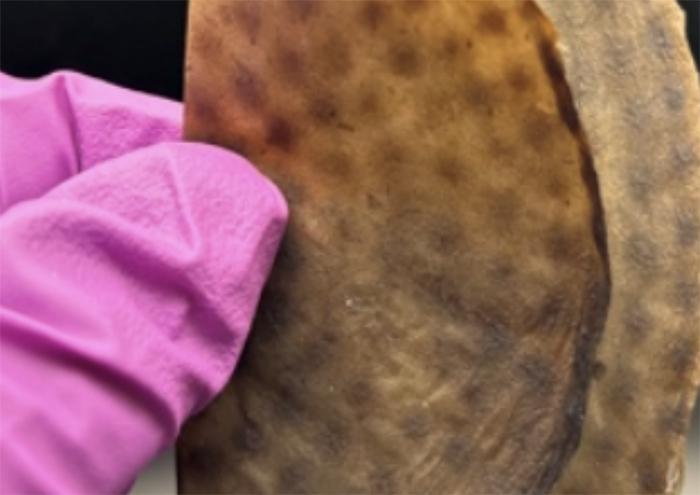Next-Generation Biomaterial Manufacturing Based on Fungi

Plastic or not a plastic? It’s a question that is both perplexing and pressing for everyone today — from researchers and manufacturers to policymakers and consumers — across industries such as packaging, textiles, transportation, and construction.
Dr. Guneet Kaur, Assistant Professor in Biological Engineering, and her team in the College of Engineering at the University of Guelph are working to address this question through the design and development of materials based on naturally occurring biopolymers of fungal origin.
 Known as fungal mycelium-based materials, these are derived from the mycelium — the vegetative, root-like structure of a fungus — and are distinct from the fungal fruiting body (the mushroom). The beauty of these fungal materials lies in the fact that they can be tailored to have properties resembling foam, leather, paper, or polymer-like plastics. Consequently, they could form the next generation of plastic materials and textiles, driving sustainable packaging and fashion.
Known as fungal mycelium-based materials, these are derived from the mycelium — the vegetative, root-like structure of a fungus — and are distinct from the fungal fruiting body (the mushroom). The beauty of these fungal materials lies in the fact that they can be tailored to have properties resembling foam, leather, paper, or polymer-like plastics. Consequently, they could form the next generation of plastic materials and textiles, driving sustainable packaging and fashion.
With fast production and well-controlled mechanical properties, pure fungal materials offer potential alternatives to cellulose-, lignin-, and pectin-based materials, as well as other biomaterials such as (poly)lactic acid (PLA) and polyhydroxyalkanoates (PHA). The challenge lies in achieving the desired material composition and mechano-physical properties at a competitive cost.
By studying nutrient regulation and mycelium growth dynamics — combined with the design of bioreactor operating strategies to manipulate the mycelium microstructure using precision fermentation — Dr. Kaur and her team are creating tough mycelium materials for various packaging and textile applications.
The team has also developed a mild post-processing method to impart the desired mechanical properties without using harsh or toxic chemicals.
“We are very excited about the kind of tough materials that we have been able to produce that are based only on a natural biopolymer and do not contain secondary materials such as biomass residues, as seen in mycelium composites,” says Dr. Kaur.
The team is currently working to enhance properties such as antimicrobial functionality to provide additional benefits for food safety.
The project has received $434,400 in combined funding from the Ontario Ministry of Agriculture, Food and Agribusiness (OMAFA) and the NSERC Alliance. This funding is enabling the team to develop a unique platform that can also be directly applied to bio-textile manufacturing in addition to sustainable packaging materials. Other potential applications include mycoproteins and mycelium scaffolds for growing artificial meat.
This work has been published in the Water Environment Research journal, has received awards at conferences such as the American Society of Agricultural and Biological Engineers and the Guelph Food Engineering Conference, and has also been invited for a presentation by the Circular Innovation Council (formerly the Recycling Council of Ontario).